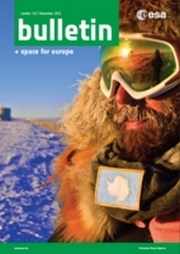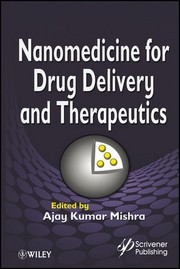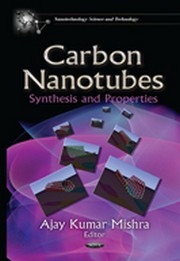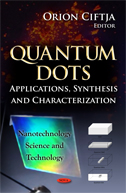

Vědět a znát, to mnohý by chtěl, ale učit se nechce.
Walther Von Der Vegelweide
Literatura
Byly zveřejněny nové hodnoty Impact Factor
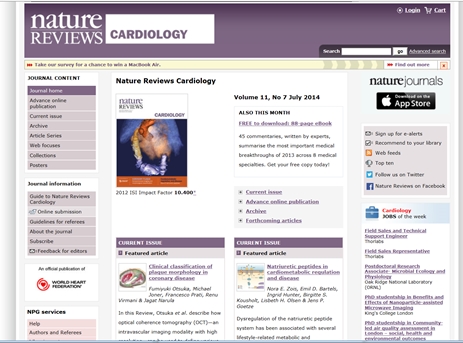 Vice podrobností naleznete na adrese
Vice podrobností naleznete na adrese
http://admin-apps.webofknowledge.com/JCR/JCR?RQ=LIST_SUMMARY_JOURNAL
Podívejte se do PLOS ONE
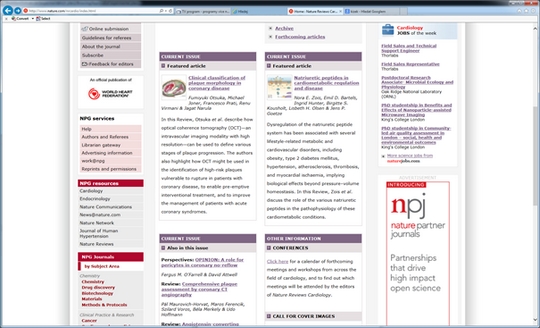 PLOS ONE Journal Information
PLOS ONE (eISSN-1932-6203) is an international, peer-reviewed, open-access, online publication. PLOS ONE welcomes reports on primary research from any scientific discipline. It provides:
PLOS ONE Journal Information
PLOS ONE (eISSN-1932-6203) is an international, peer-reviewed, open-access, online publication. PLOS ONE welcomes reports on primary research from any scientific discipline. It provides:
• Open-access—freely accessible online, authors retain copyright
• Fast publication times
• Peer review by expert, practicing researchers
• Post-publication tools to indicate quality and impact
• Community-based dialogue on articles
• Worldwide media coverage
PLOS ONE is published by PLOS, a nonprofit organization.
PLOS ONE is run as a partnership between its in-house PLOS staff and international Advisory and Editorial Boards, ensuring fast, fair, and professional peer review. To contact the Editorial Director, Damian Pattinson, or any of the Publications Assistants (who can be found at our contacts page), please e-mail plosone [at] plos.org. To access EveryONE, the PLOS ONE community blog, please visit http://everyone.plos.org
Scope
PLOS ONE features reports of original research from all disciplines within science and medicine. By not excluding papers on the basis of subject area, PLOS ONE facilitates the discovery of the connections between papers whether within or between disciplines.
Rigorous Peer-Review
Too often a journal's decision to publish a paper is dominated by what the Editor/s think is interesting and will gain greater readership — both of which are subjective judgments and lead to decisions which are frustrating and delay the publication of your work. PLOS ONE will rigorously peer-review your submissions and publish all papers that are judged to be technically sound. Judgments about the importance of any particular paper are then made after publication by the readership (who are the most qualified to determine what is of interest to them).
Open Access
PLOS applies the Creative Commons Attribution License (CCAL) to all works we publish. Under the CCAL, authors retain ownership of the copyright for their article, but authors allow anyone to download, reuse, reprint, modify, distribute, and/or copy articles in PLOS journals, so long as the original authors and source are cited. No permission is required from the authors or the publishers.

Je otevřen přístup do database časopisů ACS z MENDELU přístupového bodu. Využijte tyto přístupy maximální míře. http://pubs.acs.org/
Current Protocols
V rámci řešení projektu MENDELU RESEARCH LIBRARY http://mereli.mendelu.cz/ byl na webových stránkách http://www.mendelu.cz/cz/sluzby_sz/icuk/databaze
zpřístupněn nový elektronický informační zdroj a to Wiley Current Protocols
http://onlinelibrary.wiley.com/browse/publications?type=labprotocols. Jedná se o trvalý nákup Current Protocols publikovaných 2013-2017.
Novinky z knihovny
dovoluji si Vás upozornit, že některé z knih, které jsme se rozhodli zakoupit z projektu SCI-INFO, jsou již k dispozici. Naleznete je v databázi EBSCO (http://search.ebscohost.com) v oddělení EBSCO eBooks - VUT eBooks pro STM. Knihy jsou vyhledatelné i z normálního rozhraní EBSCO.
Prima ZOOM

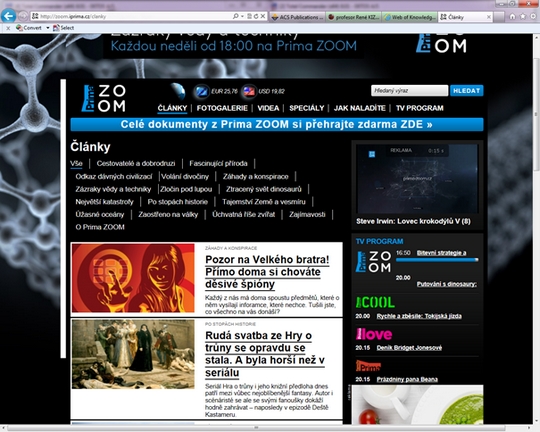
Metalothionein information servis (25 T)
Title: Sublethal effects in Atlantic salmon (Salmo salar) exposed to mixtures of copper, aluminium and gamma radiation
Author(s): Heier, Lene Sorlie; Teien, Hans Christian; Oughton, Deborah; et al.
Conference: International Conference on Radioecology and Environmental Radioactivity (ICRER)Location: Hamilton, CANADADate: JUN 19-24, 2011
Source: JOURNAL OF ENVIRONMENTAL RADIOACTIVITY Volume: 121 Special Issue: SI Pages: 33-42 DOI: 10.1016/j.jenvrad.2012.04.004 Published: JUL 2013
The present study was designed to investigate the effects in presmolt of Atlantic salmon (Salmo solar) exposed to copper (Cu), aluminium (Al) and gamma radiation, individually or in combination. Fish were exposed for 48 h to metals added to lake water; 10, 40 and 80 mu g Cu/L, 250 mu g Al/L and a combination of 40 mu g Cu/L and 250 mu g Al/L. In addition, gamma radiation (4-70 mGy delivered over 48 h) was added as an additional exposure stressor. Selected endpoints were chosen to reveal different toxic mechanisms and included Cu and Al accumulation on gills, blood chemistry and haematological variables (plasma sodium and chloride, haematocrit, glucose), hepatic levels of reduced and oxidised glutathione (GSH and GSSG) and hepatic transcriptional response of glutathione peroxidase (GPx), gamma-glutamylcysteine synthetase (GCS), metallothionein (MT) and ubiquitin. Exposure to Cu alone resulted in gill accumulation of Cu, reduction of plasma ions and increased transcriptional response of GPx, MT and ubiquitin. Exposure to Al alone reduced plasma ion levels but did not affect any of the hepatic biomarkers except for ubiquitin. The combined metal exposure (Cu + Al) altered the GSH levels, however GPx and MT were not affected suggesting a different mode of detoxification in the combined exposure. Gamma radiation appeared to influence GSH and ubiquitin levels. The observed effects seemed to be both stressor and concentration dependent. (C) 2012 Elsevier Ltd. All rights reserved.
Title: Mitochondrial hormesis links low-dose arsenite exposure to lifespan extension
Author(s): Schmeisser, Sebastian; Schmeisser, Kathrin; Weimer, Sandra; et al.
Source: AGING CELL Volume: 12 Issue: 3 Pages: 508-517 DOI: 10.1111/acel.12076 Published: JUN 2013
Arsenite is one of the most toxic chemical substances known and is assumed to exert detrimental effects on viability even at lowest concentrations. By contrast and unlike higher concentrations, we here find that exposure to low-dose arsenite promotes growth of cultured mammalian cells. In the nematode C.elegans, low-dose arsenite promotes resistance against thermal and chemical stressors and extends lifespan of this metazoan, whereas higher concentrations reduce longevity. While arsenite causes a transient increase in reactive oxygen species (ROS) levels in C.elegans, co-exposure to ROS scavengers prevents the lifespan-extending capabilities of arsenite, indicating that transiently increased ROS levels act as transducers of arsenite effects on lifespan, a process known as mitohormesis. This requires two transcription factors, namely DAF-16 and SKN-1, which employ the metallothionein MTL-2 as well as the mitochondrial transporter TIN-9.1 to extend lifespan. Taken together, low-dose arsenite extends lifespan, providing evidence for nonlinear dose-response characteristics of toxin-mediated stress resistance and longevity in a multicellular organism.
Title: Accumulation and biological effects of metals in wild rats in mining areas of Zambia
Author(s): Nakayama, Shouta M. M.; Ikenaka, Yoshinori; Hamada, Kyohei; et al.
Source: ENVIRONMENTAL MONITORING AND ASSESSMENT Volume: 185 Issue: 6 Pages: 4907-4918 DOI: 10.1007/s10661-012-2912-6 Published: JUN 2013
The lead-zinc (Pb-Zn) mine in Kabwe City and the copper-cobalt (Cu-Co) mine in the Copperbelt Province are major mining areas in Zambia. To examine the effects of metal pollution on wildlife, wild black rats (Rattus rattus and Rattus tanezumi) were captured in Kabwe and Chingola (in the Copperbelt Province), and in Lusaka (a noncontaminated site). Wild black rats in Kabwe accumulated significantly higher concentrations of Pb and Cd in various organs than rats from Lusaka. In Chingola, significantly higher concentrations of Cu, Co, Pb, and Cd were accumulated in wild black rats than in rats from Lusaka. These results were in accordance with metal accumulation patterns in soil. From toxicological aspects, concentrations of Pb and Cd in rats were generally low. However, metallothionein-1 (MT-1) and metallothionein-2 (MT-2) mRNA expression levels in wild black rats from Kabwe were significantly higher than those in rats from Lusaka. A generalized linear model (GLM) showed that concentrations of Zn and Cu had positive effects on the MT-1 and MT-2 mRNA expression. These results suggest that wild black rats in Zambian mining sites were exposed to metals that accumulated in their organs, causing biological responses such as MT mRNA induction. GLM indicated that heme oxygenase-1 (HO-1) mRNA expression could be a marker for Cr exposure.
Title: Multiple biomarkers of pollution effects in Solea solea fish on the Tunisia coastline
Author(s): Jebali, Jamel; Sabbagh, Marwa; Banni, Mohamed; et al.
Source: ENVIRONMENTAL SCIENCE AND POLLUTION RESEARCH Volume: 20 Issue: 6 Pages: 3812-3821 DOI: 10.1007/s11356-012-1321-2 Published: JUN 2013
Title: Metallothionein 1h tumour suppressor activity in prostate cancer is mediated by euchromatin methyltransferase 1
Author(s): Han, Yu-Chen; Zheng, Zhong-Liang; Zuo, Ze-Hua; et al.
Source: JOURNAL OF PATHOLOGY Volume: 230 Issue: 2 Pages: 184-193 DOI: 10.1002/path.4169 Published: JUN 2013
Metallothioneins (MTs) are a group of metal binding proteins thought to play a role in the detoxification of heavy metals. Here we showed by microarray and validation analyses that MT1h, a member of MT, is down-regulated in many human malignancies. Low expression of MT1h was associated with poor clinical outcomes in both prostate and liver cancer. We found that the promoter region of MT1h was hypermethylated in cancer and that demethylation of the MT1h promoter reversed the suppression of MT1h expression. Forced expression of MT1h induced cell growth arrest, suppressed colony formation, retarded migration, and reduced invasion. SCID mice with tumour xenografts with inducible MT1h expression had lower tumour volumes as well as fewer metastases and deaths than uninduced controls. MT1h was found to interact with euchromatin histone methyltransferase 1 (EHMT1) and enhanced its methyltransferase activity on histone 3. Knocking down of EHMT1 or a mutation in MT1h that abrogates its interaction with EHMT1 abrogated MT1h tumour suppressor activity. This demonstrates tumour suppressor activity in a heavy metal binding protein that is dependent on activation of histone methylation. Copyright (c) 2013 Pathological Society of Great Britain and Ireland. Published by John Wiley & Sons, Ltd.
Title: Hepatoprotection of 1 beta-hydroxyeuscaphic acid - the major constituent from Rubus aleaefolius against CCl4-induced injury in hepatocytes cells
Author(s): Hu, Juan; Zhao, Jinyan; Chen, Wang; et al.
Source: PHARMACEUTICAL BIOLOGY Volume: 51 Issue: 6 Pages: 686-690 DOI: 10.3109/13880209.2012.762406 Published: JUN 2013
Title: Influence of a step-change in metal exposure (Cd, Cu, Zn) on metal accumulation and subcellular partitioning in a freshwater bivalve, Pyganodon grandis: A long-term transplantation experiment between lakes with contrasting ambient metal levels
Author(s): Cooper, Sophie; Bonneris, Emmanuelle; Michaud, Annick; et al.
Source: AQUATIC TOXICOLOGY Volume: 132 Pages: 73-83 DOI: 10.1016/j.aquatox.2013.01.021 Published: MAY 15 2013
Abstract: The objective of the present field experiment was to identify detoxification responses in the gills and digestive gland of a freshwater unionid bivalve, Pyganodon grandis, subjected to a step-change in metal exposure. Adult bivalves were transferred from a reference site (Lake Opasatica) and a metal-contaminated lake (Lake Heva) to a second contaminated lake (Lake Vaudray) in northwestern Quebec, Canada. Changes in organ metal concentrations, in the subcellular distribution of metals and in metallothionein concentrations were followed over time (t = 0, 132, (400) and 860 days). At each collection time and for each bivalve, the gills and digestive gland were excised and gently homogenized; six sub-cellular fractions were separated by differential centrifugation and analyzed for their Cd, Cu and Zn content, and metallothionein was quantified independently.
Metal detoxification strategies were shown to differ between target organs: in the gills, incoming metals were sequestered largely in the granules, whereas in the digestive gland the same metals primarily accumulated in the cytosol, in the metallothionein-like protein fraction. These metal-handling strategies, as employed by the metal-naive bivalves originating in the reference lake, closely resemble those identified in free-living P. grandis chronically exposed in the metal-contaminated lake, suggesting that the ability to handle incoming metals (Cd in particular) is inherent in P. grandis and is not a trait acquired after long-term adaptation of the bivalve to metal-contaminated environments.
The bivalves transplanted from both Lakes Opasatica and Heva were able to tolerate their new surroundings during the first 400 days of the transplant experiment, as indicated by the absence of mortality and the presence of gravid animals. Over the final 460 days, mortality remained low for the bivalves transplanted from the reference lake (20%) but reached 100% in the transplanted group from the contaminated lake. It would seem that the Lake Heva bivalves were compromised by their initial exposure to metals in their home lake and that the added stress of being transplanted to and caged in a lake with comparable or slightly higher concentrations of metals was sufficient to cause mortality. (C) 2013 Elsevier B.V. All rights reserved.
Title: Analysis of hepatic gene expression profile in a spontaneous mouse model of type 2 diabetes under a high sucrose diet
Author(s): Nojima, Koji; Sugimoto, Ken; Ueda, Hironori; et al.
Source: ENDOCRINE JOURNAL Volume: 60 Issue: 3 Pages: 261-274 Published: MAR 2013
Title: Update on Zinc Biology
Author(s): Solomons, Noel W.
Source: ANNALS OF NUTRITION AND METABOLISM Volume: 62 Supplement: 1 Pages: 8-17 DOI: 10.1159/000348547 Published: 2013
Zinc has become a prominent nutrient of clinical and public health interest in the new millennium. Functions and actions for zinc emerge as increasingly ubiquitous in mammalian anatomy, physiology and metabolism. There is undoubtedly an underpinning in fundamental biology for all of the aspects of zinc in human health (clinical and epidemiological) in pediatric and public health practice. Unfortunately, basic science research may not have achieved a full understanding as yet. As a complement to the applied themes in the companion articles, a selection of recent advances in the domains homeostatic regulation and transport of zinc is presented; they are integrated, in turn, with findings on genetic expression, intracellular signaling, immunity and host defense, and bone growth. The elements include ionic zinc, zinc transporters, metallothioneins, zinc metalloenzymes and zinc finger proteins. In emerging basic research, we find some plausible mechanistic explanations for delayed linear growth with zinc deficiency and increased infectious disease resistance with zinc supplementation. Copyright (C) 2013 S. Karger AG, Basel
Title: Chelation: Harnessing and Enhancing Heavy Metal Detoxification-A Review
Author(s): Sears, Margaret E.
Source: SCIENTIFIC WORLD JOURNAL Article Number: 219840 DOI: 10.1155/2013/219840 Published: 2013
Abstract: Toxic metals such as arsenic, cadmium, lead, and mercury are ubiquitous, have no beneficial role in human homeostasis, and contribute to noncommunicable chronic diseases. While novel drug targets for chronic disease are eagerly sought, potentially helpful agents that aid in detoxification of toxic elements, chelators, have largely been restricted to overt acute poisoning. Chelation, that is multiple coordination bonds between organic molecules and metals, is very common in the body and at the heart of enzymes with a metal cofactor such as copper or zinc. Peptides glutathione and metallothionein chelate both essential and toxic elements as they are sequestered, transported, and excreted. Enhancing natural chelation detoxification pathways, as well as use of pharmaceutical chelators against heavy metals are reviewed. Historical adverse outcomes with chelators, lessons learned in the art of using them, and successes using chelation to ameliorate renal, cardiovascular, and neurological conditions highlight the need for renewed attention to simple, safe, inexpensive interventions that offer potential to stem the tide of debilitating, expensive chronic disease.
Influenza information servis (25 T)
Title: Synthesis of New Compounds Combining Adamantanamine and Monoterpene Fragments and their Antiviral Activity Against Influenza Virus A(H1N1)pdm09Author(s): Teplov, George V.; Suslov, Evgeny V.; Zarubaev, Vladimir V.; et al.
Source: LETTERS IN DRUG DESIGN & DISCOVERY Volume: 10 Issue: 6 Pages: 477-485 Published: JUL 2013
A set of new nitrogen-containing compounds with adamantane and monoterpene frameworks was synthesized. The antiviral activity of the amine products against the influenza virus A/California/07/09 (H1N1)pdm09 was studied. The introduction of a monoterpenoid fragment led to increase of the antiviral activity of adamantylamine derivatives against adamantylamine resistant virus: the selectivity index of the majority of the synthesized amines was higher than that of rimantadine and amantadine.
Title: A microfluidic immunomagnetic bead-based system for the rapid detection of influenza infections: from purified virus particles to clinical specimens
Author(s): Hung, Lien-Yu; Huang, Tze-Bin; Tsai, Yi-Che; et al.
Source: BIOMEDICAL MICRODEVICES Volume: 15 Issue: 3 Pages: 539-551 DOI: 10.1007/s10544-013-9753-0 Published: JUN 2013
Abstract: Seasonal and novel influenza infections have the potential to cause worldwide pandemics. In order to properly treat infected patients and to limit its spread, a rapid, accurate and automatic influenza diagnostic tool needs to be developed. This study therefore presents a new integrated microfluidic system for the rapid detection of influenza infections. It integrated a suction-type, pneumatic-driven microfluidic control module, a magnetic bead-based fluorescent immunoassay (FIA) and an end-point optical detection module. This new system can successfully distinguish between influenza A and B using a single chip test within 15 min automatically, which is faster than existing devices. By utilizing the micromixers to thoroughly wash out the sputum-like mucus, this microfluidic system could be used for the diagnosis of clinical specimens and reduced the required sample volume to 40 mu L. Furthermore, the results of diagnostic assays from 86 patient specimens have demonstrated that this system has 84.8 % sensitivity and 75.0 % specificity. This developed system may provide a powerful platform for the fast screening of influenza infections.
Title: Tyrosine 132 Phosphorylation of Influenza A Virus M1 Protein Is Crucial for Virus Replication by Controlling the Nuclear Import of M1
Author(s): Wang, Shanshan; Zhao, Zhendong; Bi, Yuhai; et al.
Source: JOURNAL OF VIROLOGY Volume: 87 Issue: 11 Pages: 6182-6191 DOI: 10.1128/JVI.03024-12 Published: JUN 2013
Title: Substitutions T200A and E227A in the Hemagglutinin of Pandemic 2009 Influenza A Virus Increase Lethality but Decrease Transmission
Author(s): Martnez-Romero, Carles; de Vries, Erik; Belicha-Villanueva, Alan; et al.
Source: JOURNAL OF VIROLOGY Volume: 87 Issue: 11 Pages: 6507-6511 DOI: 10.1128/JVI.00262-13 Published: JUN 2013
Title: Surveillance of avian influenza A(H7N9) virus infection in humans and detection of the first imported human case in Taiwan, 3 April to 10 May 2013
Author(s): Lo, Y. C.; Chen, W. C.; Huang, W. T.; et al.
Source: EUROSURVEILLANCE Volume: 18 Issue: 20 Pages: 2-5 Article Number: 20479 Published: MAY 16 2013
Title: Outbreak with a novel avian influenza A(H7N9) virus in China - scenarios and triggers for assessing risks and planning responses in the European Union, May 2013
Author(s): Schenk, C.; Plachouras, D.; Danielsson, N.; et al.
Source: EUROSURVEILLANCE Volume: 18 Issue: 20 Pages: 12-17 Article Number: 20482 Published: MAY 16 2013
Title: Receptor binding by a ferret-transmissible H5 avian influenza virus
Author(s): Xiong, Xiaoli; Coombs, Peter J.; Martin, Stephen R.; et al.
Source: NATURE Volume: 497 Issue: 7449 Pages: 392-+ DOI: 10.1038/nature12144 Published: MAY 16 2013
Title: Influenza A virus induced bacterial otitis media is independent of virus tropism for alpha 2,6-linked sialic acid
Author(s): Short, Kirsty R.; Habets, Marrit N.; Payne, Jean; et al.
Source: VIROLOGY JOURNAL Volume: 10 Article Number: 128 DOI: 10.1186/1743-422X-10-128 Published: APR 23 2013
Background: Otitis media (OM) affects >= 80% of children before the age of three. OM can arise following co-infection with influenza A virus (IAV) and the bacterium Streptococcus pneumoniae. We have previously shown that H3 IAV strains (such as Udorn/72) induced a higher rate of bacterial OM than H1 strains (such as PR8/34). This was associated with more efficient replication of H3 strains in the middle ear.
Findings: Here, we assess if the increased replication of IAV strains such as Udorn/72 in the middle ear is dependent upon the binding of the viral HA to a2,6-linked sialic acid. Using murine and in vitro models, the present study shows that recognition of a2,6-linked sialic acid was not required to facilitate bacterial OM.
Conclusions: Taken together, these data suggest that other features of the HA mediate bacterial OM.
Aktuální výzvy pro speciální čísla časopisů/Current calls for a special issues
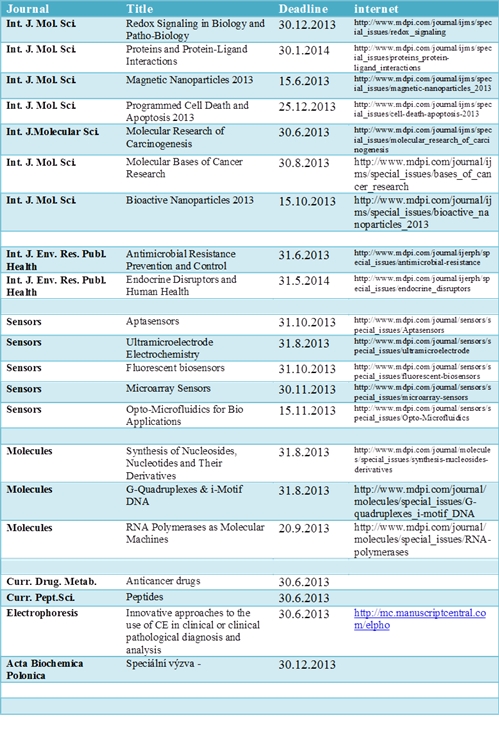
ODKAZY | LINKS




NOVÉ PUBLIKACE
Nanoparticles-based Carriers for Gene Therapy and Drug Delivery
Chemical Vapour Depositions for Carbon Nanotubes Synthesis
Quantum Dots:Biological and biomedecical applications
Archiv
23_201322_2013
21_2013
20_2013
19_2013
18_2013
17_2013
16_2013
15_2013
14_2013
13_2013
12_2013
11_2013
10_2013
09_2013
08_2013

 | Zemědělská 1/1665 613 00 Brno Budova D | Tel.: +420 545 133 350 Fax.: +420 545 212 044 |  |
 |













